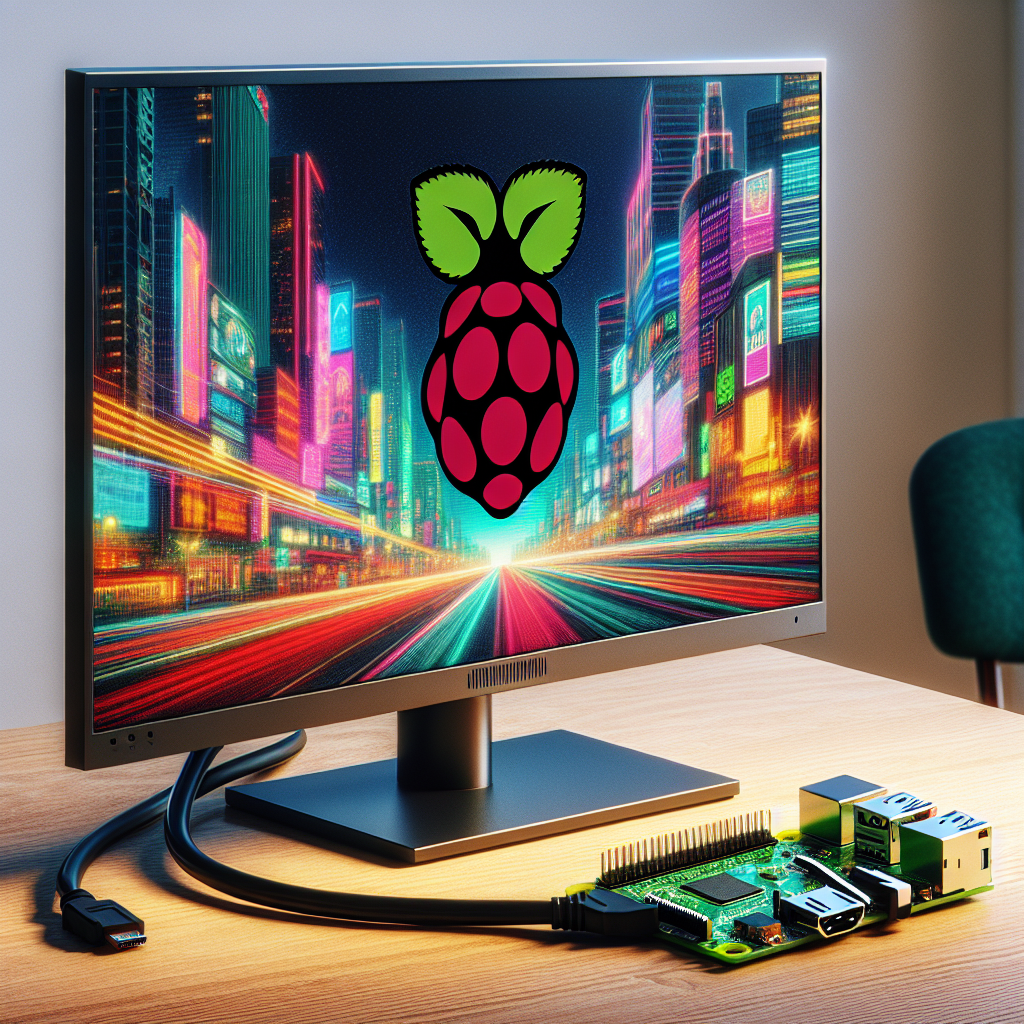Can I use a plasma monitor with a Raspberry Pi?
Using a Raspberry Pi in various applications has become increasingly popular due to its versatility and affordability. One common query among users is whether a plasma monitor can be used with a Raspberry Pi. This article delves into the compatibility of plasma monitors with Raspberry Pi, ensuring you get the best performance from your setup.
What is a Raspberry Pi?
The Raspberry Pi is a series of small single-board computers developed by the Raspberry Pi Foundation to promote the teaching of basic computer science in schools and developing countries. It has evolved into several models with varying capabilities, but all share the common traits of being compact, affordable, and versatile.
Common Models:
- Raspberry Pi 4
- Raspberry Pi 3
- Raspberry Pi Zero W
- Raspberry Pi 400
What is a Plasma Monitor?
Plasma monitors utilize small gas-filled cells between two glass panels to produce images. These cells are electrified to create light, which has the advantage of producing deeper blacks and brighter colors compared to some other display technologies. However, plasma technology is not as common today, with LCD and OLED being more prevalent.
Compatibility Factors
To determine if a plasma monitor is compatible with a Raspberry Pi, we need to consider several factors:
| Compatibility Factors | Details |
|---|---|
| Connectivity | The Raspberry Pi typically uses HDMI output, so your plasma monitor needs to support HDMI input, or you will require an adapter. |
| Resolution | The resolution of the plasma monitor and the Raspberry Pi’s output resolution should be compatible for optimal display quality. |
| Power Supply | Both devices must be adequately powered to function correctly. Ensure that your power adapter provides sufficient power for the Raspberry Pi and monitor. |
Setting Up Raspberry Pi with a Plasma Monitor
Step-by-Step Guide
Follow these steps to set up your Raspberry Pi with a plasma monitor:
1. Gather Required Items
- Raspberry Pi
- Plasma Monitor
- HDMI Cable or Adapter
- Power Adapter
- Keyboard and Mouse
- MicroSD Card with Raspberry Pi OS
2. Connect HDMI Cable
Connect one end of the HDMI cable to the Raspberry Pi and the other end to the plasma monitor. If your monitor has a different input type, use the appropriate adapter.
3. Insert MicroSD Card
Insert the microSD card, which contains the pre-installed Raspberry Pi OS, into the microSD slot on the Raspberry Pi.
4. Power Up
Connect the power supply to the Raspberry Pi. Ensure that the plasma monitor is also properly powered and turned on.
5. Initial Boot
Once powered on, the Raspberry Pi will boot up, and you should see the display on your plasma monitor.
Optimizing Display Settings
After the initial setup, you may need to adjust the display settings for optimal performance:
- Resolution: Adjust the output resolution of the Raspberry Pi to match the native resolution of the plasma monitor.
- Refresh Rate: Ensure that the refresh rate is set correctly to prevent screen flickering.
- Scaling: Adjust the scaling settings if the display appears stretched or compressed.
Editing config.txt
If further adjustments are necessary, you can edit the config.txt file on your Raspberry Pi. This file contains configuration settings for the boot process, including display settings. Some useful parameters include:
- hdmi_group: Set to 1 for CEA or 2 for DMT.
- hdmi_mode: Defines the resolution and refresh rate.
- hdmi_force_hotplug: Set to 1 to force HDMI output even if no HDMI monitor is detected.
Performance Insights
The performance of a Raspberry Pi when connected to a plasma monitor largely depends on the model of the Raspberry Pi and the resolution of the monitor. Here are some insights:
Model Performance
- Raspberry Pi 4: Capable of 4K video output at 60fps, suitable for high-resolution plasma monitors.
- Raspberry Pi 3: Supports Full HD (1080p) video output, which is sufficient for most plasma monitors.
- Raspberry Pi Zero W: Limited to lower resolutions, best suited for small or medium-sized plasma monitors.
Heat Management
When running high-resolution displays, especially with graphic-intensive applications, the Raspberry Pi may generate significant heat. Consider using heat sinks or fans to manage temperatures effectively.
Common Issues and Troubleshooting
Despite careful setup, you might encounter some common issues. Here are a few troubleshooting tips:
- No Signal: Ensure that both the Raspberry Pi and plasma monitor are powered on and properly connected. Check the HDMI cable for faults.
- Incorrect Resolution: Adjust the resolution settings in the Raspberry Pi configuration or config.txt file.
- Screen Flickering: Check the refresh rate settings and ensure they match the specifications of the plasma monitor.
- Overheating: Use heat sinks or fans to cool down the Raspberry Pi.
Best Practices
To ensure the longevity and optimal performance of your setup, consider the following best practices:
- Proper Ventilation: Ensure that the Raspberry Pi is well-ventilated to prevent overheating.
- Quality Cables: Use high-quality HDMI cables to ensure a stable and clear connection.
- Regular Updates: Keep the Raspberry Pi OS updated to benefit from the latest improvements and bug fixes.
- Backup: Regularly back up your microSD card to prevent data loss.
Conclusion
Using a plasma monitor with a Raspberry Pi is feasible and can result in a high-quality display setup, provided you ensure compatibility in terms of connectivity, resolution, and power supply. By following the outlined steps and best practices, you can achieve an optimal performance experience with your Raspberry Pi and plasma monitor setup.

